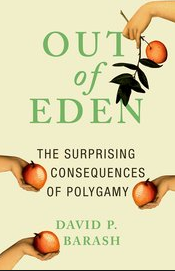I had this brilliant idea about how to fix the Supreme Court, but no one wanted to pay me for it. But the country needs to know! So here it is.
So what is the problem with the Supreme Court anyway? I would say there are 2.
(1) Judge’s have life tenures and life forever now because of pesky improving diet and healthcare. That means that your grandpappy’s electoral preferences determine who gets to marry and have abortions and have labor unions. Nothing against your grandpappy, but people shouldn’t have their lives mangled and stretched by elections that happened before they were born. The court needs to be more accountable to the current electorate. Or, in short, the court isn’t politicized enough.
(2) Partisan polarization means that battles over judges have become completely intractable. At the moment, it’s not entirely clear that we can ever get a judge approved again if the President and the Senate aren’t of the same party. Justices are also forced to try to time their retirement so they’re replaced by a President of the right party. The whole thing is undignified, distracting, and generally pitiful, as well as potentially interfering with the smooth functioning of the court. In short, the court is too politicized.
So, how do you fix the too much politicization and the too little politicization? It seems impossible…but I have the one perfect awesome solution that you can tell is awesome because no one would pay me for it.
Prepare for said solution…now.
Have each President appoint one and only one judge per term. Appointments should happen right after the President is elected; it can be one of the first things the President does.
This of course means that the number of judges on the court will change. But the number of judges isn’t set in stone, or even in the Constitution. It’s been as low as 7 and as high as 10. There’s no reason it can’t vary every four years (or more often if a judge retires or dies mid-term).
Let’s list the advantages of the Berlatsky plan:
1. Every Presidential election will be represented on the court. Voters will know that a vote for President is a vote for one (1) Supreme Court pick.
2. Since everyone knows there is a pick coming, the election will be a mandate for a Supreme Court selection. This will undermine the partisan “wait till the next election” nonsense. To prevent stalling and stonewalling, a bill could also provide that if there is no vote on a nominee within 6 months, the judge is automatically seated. Since everyone knows each president will get a judge, the stakes will be reduced; each party will hope that their own judge will affect the balance of the court in four short years.
3. Retirements would be divorced from Supreme Court nominations. Justices would have much less incentive to time their retirements, since every President would always get one pick, no matter when the sitting justices step down. Presumably, justices would often retire at the beginning of a presidential term, when the new judge would be selected…but if they didn’t, it wouldn’t make no nevermind.
4. At least in theory, this shouldn’t be a difficult reform to pass. It doesn’t give a clear advantage to either Democrats or Republicans; instead, it ensures that each President, from whichever party, has a chance to select a judge with much lower stakes and much less partisan squabbling. It also mean that Presidents, of whatever party, will be able immediately to somewhat reduce the chance that the court will interfere with their policy preferences. Democrats and Republicans alike should like that, since Democrats and Republicans alike always think they’re going to win the next election.
So there you have it. I could see various tweaks—maybe it should be two justices for each President rather than one? But overall, I think it’s a remarkably elegant solution if I do say so myself. Since all the policymakers read the Hooded Utilitarian religiously, I expect it to be adopted any minute now.

I John Marshall, old white dude, and I endorse this plan.







